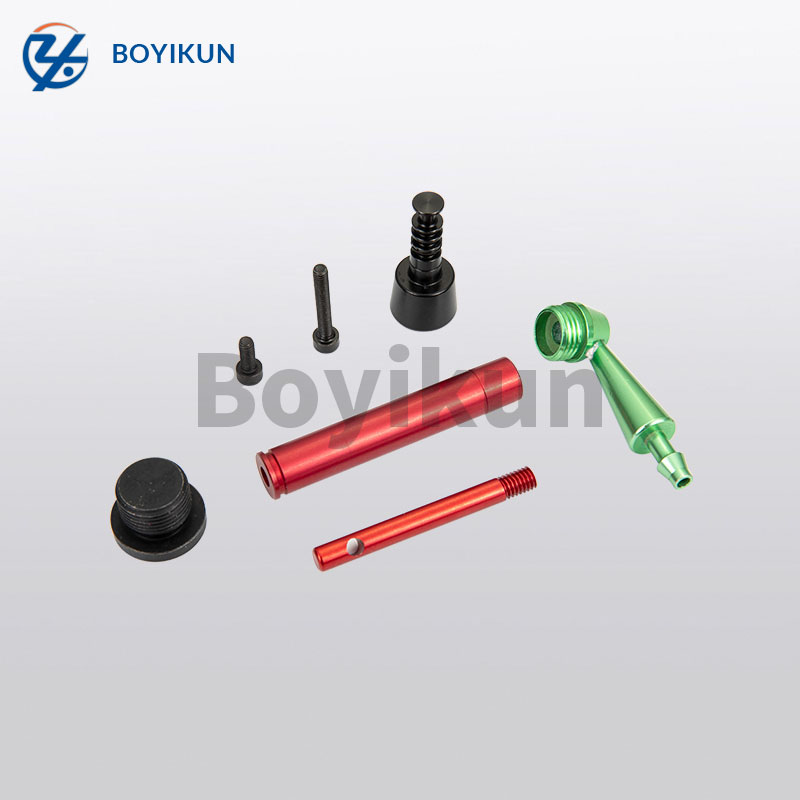Abstract:Combining your partial threads can sometimes be the ultimate...
Combining your partial threads can sometimes be the ultimate destruction of your components. There are a lot of design rules and the precision required to make threads is very high. Beyond that, these features require some extra thought and care to ensure they work as designed. Get them right and the assembly can last for years. Do it wrong and you enter a world of hurt.
Adding threads to a part can sometimes lead to the final destruction of the part, and the precision required to make threads is very high. Beyond that, these features require some extra thought and attention to ensure they work as designed.
External and internal threads
An easy way to remember this distinction is that external threads can be found on screws and bolts, which are on the outside of the hardware. Internal threads are located inside the body part. They accept and lock screw and bolt threads. You'll find more details on external and internal threads later in this design tip.
Bolt Spacing
When we talk about threads on bolts and screws, it's not a one-size-fits-all situation. In addition to metric threads, there are three main types of imperial threads, which are part of the unified thread family.
UNC (coarse pitch): 20 threads per inch (tpi)
UNF (fine pitch): 28 tpi
UNEF (Ultra Fine Pitch): 32 tpi
Please note that adding UNEF pitch requires our precision machining service, accessible through our quote system. For example, if you want to use a #4-40 screw, you know that a #4 screw has a 0.11" (2.794mm) thread diameter and has 40 threads per inch, meaning a very fine pitch.
For turned parts, there are three types of holes that can be used to accommodate internal threads:
1. On the shaft: Start at one end and go straight through the hole in the center of the turned part
2. Axial: from one end of the part, but not completely through the hole in the center
3. Radial: A hole through the outer arc of a turned part
internal thread
Internal threads are machined with a single-lip thread tool instead of a traditional thread tap. When machining internally threaded holes, the holes may be longer than our threading tools can reach. In this case, depending on your needs, you have several options:
For long through holes that exceed the maximum range, select the hole from the side where you are expected to start the screw (see Figure 1 in the three panel illustrations above). If your screw needs to go all the way through the part, you'll also have to pass a tap through the hole (in the second process) to do it.
You can also select both sides of the feature to be threaded (see Figure 2 in the image above), but be careful with the maximum thread depth as they overlap each other in the hole. This raises concerns about tapping features from both sides, as there is a risk of cross-tapping and the screw may not go all the way through the part. Selecting threads from both sides is usually fine as long as the threads do not intersect (see Figure 3).
An important consideration has to do with the various diameters involved in creating threads. You must consider three measurements: the primary (wide) thread, the secondary (narrow) thread, and the diameter of the pilot hole into which the threaded feature will go.
If your design instructs the manufacturer to mill a pilot hole the same diameter as the main (wide) thread, you're using hardware that will never fit properly in the hole. It will pop out and the screw may spin endlessly in the hole. At this point, your only option will be to use larger hardware, which may be functionally unacceptable or inconsistent with your design. Making sure the pilot hole of any threaded feature reflects the small diameter of the thread saves you some trouble.

External thread
The advantage of external threads on
CNC turned parts is that the threads extend the length of the part as long as the part is compliant for turning. Milling of external threads is carried out in two stages. The first set of threads goes around half of the turned part, then thread milling is done on the other side. The two sides meet along the centerline of the part. This process is suitable for 1/2" threads, but we recommend trimming the threads to remove excess material or eliminate mismatches in the threads.
Smaller external threads (such as #6-32) are more difficult to machine with a ball or flat end mill because the pitch is too tight, leaving a larger radius at the root of the thread. You will need to use a thread cutting die to cut the threads so that the remaining material can be removed. On many parts, a 0.008 to 0.016 inch (0.2032 to 0.4064 mm) radius will remain.
On turned parts, external threading is greatly improved, as the part rotates in the center and a sharp single-lip threading tool produces high-quality threads. The design of the external thread is similar to that of the internal bore. Remember, you must remove the thread so our software can look at the outside diameter numerically to determine the type of thread you need.
